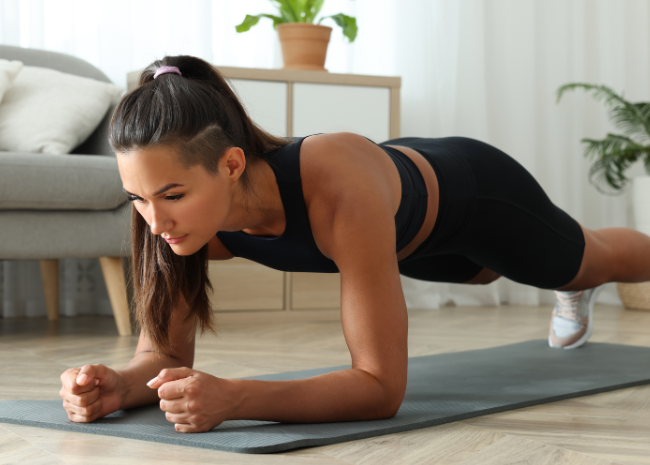
Understanding Knee Arthritis
Knee arthritis is the single greatest cause of chronic disability among adults in the United States. Many factors can lead to knee pain—arthritis, excessive foot pronation, muscle fatigue, even injury—but we have good news for you: most chronic knee pain is preventable.
The New England Journal of Medicine recently found evidence suggesting that exercise and physical therapy can be as effective as surgery in treating chronic, arthritis-related knee pain.
The Role of Muscles in Knee Pain
When muscles are forced to compensate for others that are weak or overused, injuries and chronic pain often occur. By strengthening and stretching key muscles and joints that support your knees, you can ultimately relieve and prevent knee pain.
– Importance of Core Strength
The key to successfully preventing knee pain may surprise you: strengthening your core. An overall weak and inflexible core can impair arm and leg function, thus leading to knee pain and injury.
Your core consists of more than just your abdominals; it’s made up of all your torso muscles, including those in your back, hips, and upper thighs.
– Effects of Abdominal Weakness
Abdominal weakness may cause your leg bones to shift inward while your pelvis tilts forward, creating excessive lower-back curvature.
Strengthening your core will also help keep your back in a neutral spine position, thus avoiding painful joint compression.
6 Core Exercises for Knee Pain
Importance of Core Exercises
Here are some effective core exercises to help alleviate knee pain:
1) Planks
Planks are excellent for building core strength. To perform a plank:
- Start by lying face down on the ground.
- Lift your body onto your forearms and toes, keeping your body in a straight line from head to heels.
- Hold this position for 20-30 seconds, gradually increasing the duration as your strength improves.
2) Bridges
Bridges target your glutes, lower back, and core muscles. To perform a bridge:
- Lie on your back with your knees bent and feet flat on the floor, hip-width apart.
- Press your feet into the ground and lift your hips toward the ceiling, squeezing your glutes.
- Hold for a few seconds at the top, then lower your hips back to the starting position.
- Repeat for 10-15 repetitions.
3) Bird-Dogs
Bird-dogs enhance stability and coordination while strengthening your core. To perform a bird-dog:
- Start on your hands and knees in a tabletop position.
- Extend your right arm forward and your left leg back, keeping both parallel to the floor.
- Hold for a few seconds, then return to the starting position.
- Repeat on the opposite side, extending your left arm and right leg.
- Perform 10-12 repetitions on each side.
4) Russian Twists
Russian twists work your obliques and improve rotational stability. To perform a Russian twist:
- Sit on the floor with your knees bent and feet flat.
- Lean back slightly and lift your feet off the ground, balancing on your sit bones.
- Hold a weight or medicine ball with both hands.
- Rotate your torso to the right, bringing the weight beside your hip.
- Return to the center and then rotate to the left.
- Perform 15-20 repetitions on each side.
5) Leg Raises
Leg raises target your lower abdominals. To perform a leg raise:
- Lie on your back with your legs extended and hands by your sides.
- Lift your legs toward the ceiling until they form a 90-degree angle with your body.
- Slowly lower your legs back down without letting them touch the ground.
- Repeat for 10-15 repetitions.
6) Side Planks
Side planks strengthen your obliques and improve lateral stability. To perform a side plank:
- Lie on your side with your legs extended and feet stacked.
- Prop yourself up on your forearm, keeping your body in a straight line from head to feet.
- Hold this position for 20-30 seconds, then switch to the other side.
- Gradually increase the duration as your strength improves.
Incorporating Core Exercises
Incorporating these core exercises into your routine can help alleviate knee pain and prevent future injuries.
Start with a few exercises and gradually increase the intensity and duration as your core strength improves. Consistency is key, so aim to perform these exercises 3-4 times a week for the best results.
Benefits of Increased Core Strength
Increased core strength offers many benefits beyond reduced knee pain.
You may notice:
- Improved posture
- Better balance
- Reduced back pain
- Easier breathing
- Increased range of motion
- Weight loss or maintenance
Designing a Core Routine
Whether you suffer from chronic knee pain or are recovering from a recent injury, we can design a core routine that’s right for you. We will teach you how to use proper form to do some exercises safely and effectively on your own.
Did you know you have Direct Access* to Physical Therapy? No referral, no problem!
Although it may be a challenge to get started, once you begin strengthening your core, you will notice an improvement in the way you look, feel, and move throughout your day.









